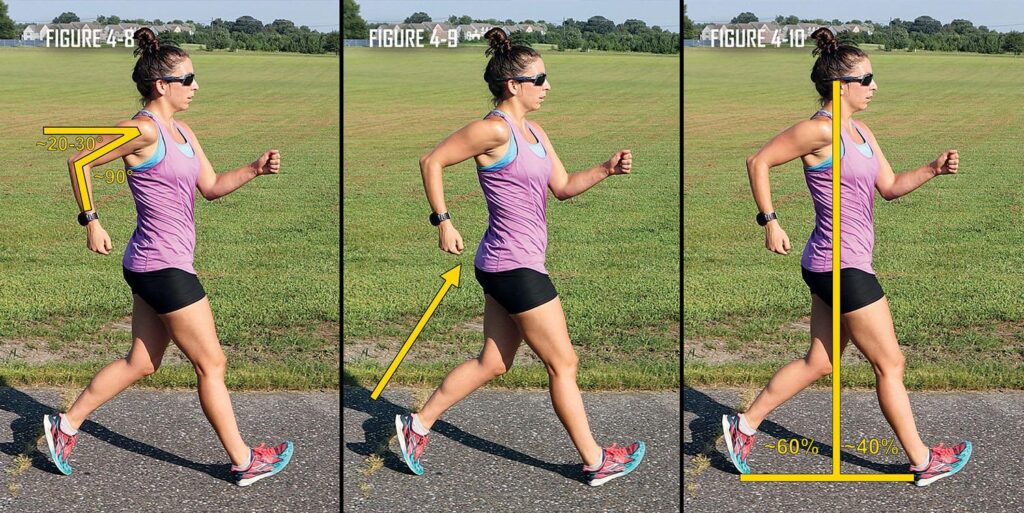Race walking and running are two athletic disciplines that share a common goal-covering distance as quickly as possible-but differ markedly in technique, rules, and physical demands. As both sports continue to captivate audiences worldwide, The New York Times explores the key distinctions between race walking and running, shedding light on their respective histories, training methods, and competitive landscapes. This article delves into how these factors shape performance and perception, offering readers a comprehensive comparison of the two endurance events.
Race Walking Versus Running The Biomechanics Behind Each Stride
At the core of these two athletic movements lies a fundamental difference in ground contact and body mechanics. In race walking, the athlete must maintain continuous contact with the ground, with the leading leg straightened from the moment of first contact until it passes under the body. This creates a distinctive hip rotation that enables the walker to maximize stride length while adhering to strict rules. Conversely, running involves a brief airborne phase where neither foot touches the ground simultaneously, allowing for greater speed but resulting in higher ground reaction forces. Runners tend to flex their knees upon landing to absorb impact, which contrasts sharply with the rigid leg extension seen in race walking.
- Hip motion in race walking leads to visible sway, optimizing stride without breaking form.
- Running promotes more vertical oscillation due to the aerial phase, adding to energy expenditure.
- Race walkers must rely heavily on quick cadence and hip rotation, while runners benefit from powerful push-offs and elastic energy storage in tendons.
| Biomechanical Aspect | Race Walking | Running |
|---|---|---|
| Ground Contact | Continuous, one foot always grounded | Intermittent, both feet airborne briefly |
| Leg Position | Leading leg always straight | Knee flexed on ground contact |
| Hip Movement | Exaggerated rotation | Minimal rotation, focused on forward drive |
| Impact Forces | Lower but sustained | Higher peak forces with impact absorption |
Endurance and Speed How Athletes Train Differently for Race Walking and Running
At the core of race walking and running lies the delicate balance between endurance and speed, yet the methods athletes use to develop these qualities diverge significantly. Race walkers focus intensely on maintaining the legal technique-one foot must appear to be in contact with the ground at all times, and the leading leg must straighten upon landing. This constant emphasis strains specific muscle groups differently than running, prompting walkers to adopt training regimens rich in technique drills, hip mobility exercises, and long-duration, low-impact endurance sessions to conserve energy and stave off injury.
On the other hand, runners prioritize maximizing stride length and turnover, targeting explosive power alongside aerobic capacity. Their programs often include interval training, hill sprints, and tempo runs designed to push cardiovascular limits while building muscle strength across the lower body. The training contrast is clearest when considering how speed is cultivated: walkers enhance cadence and efficiency within strict biomechanical constraints, whereas runners dive into unrestricted speed work that pushes the natural boundaries of stride dynamics.
- Race Walkers: Technique-focused endurance, flexibility, consistent pacing
- Runners: Power development, interval speed training, stride efficiency
| Training Aspect | Race Walking | Running |
|---|---|---|
| Key Muscle Groups | Hips, shins, calves | Quads, hamstrings, glutes |
| Speed Work | Controlled cadence drills | Interval sprints |
| Endurance Focus | Long steady sessions | Threshold runs |
Choosing the Right Workout Recommendations for Fitness Enthusiasts and Competitive Athletes
Tailoring workout recommendations hinges on understanding the distinct physiological demands that separate race walking from running. While both require cardiovascular endurance and lower-body strength, race walking emphasizes hip flexibility and strict technique adherence, which can benefit fitness enthusiasts aiming to reduce joint impact. Competitive athletes seeking performance gains in either discipline must consider these unique mechanics when crafting training regimens, balancing mileage, recovery, and technical drills to optimize efficiency.
When comparing the two, here are key factors to consider for informed workout choices:
- Impact Level: Race walking offers lower impact forces on joints, making it ideal for injury prevention.
- Technique Focus: Requires attention to gait form, which can improve posture and core strength.
- Energy Expenditure: Both burn similar calories over distance, though running is generally more intense.
- Muscle Engagement: Running activates a broader range of muscles, particularly in the upper body.
| Workout Aspect | Race Walking | Running |
|---|---|---|
| Joint Impact | Low | High |
| Technique Complexity | High | Moderate |
| Typical Heart Rate Zone | 60-75% Max HR | 70-85% Max HR |
| Caloric Burn (per mile) | Approx. 100 kcal | Approx. 120 kcal |
The Way Forward
As race walking continues to gain recognition alongside traditional running events, understanding the nuances between the two sports sheds light on their unique physical demands and competitive appeal. Whether through the swift strides of runners or the distinctive technique of race walkers, both disciplines offer compelling challenges and opportunities for athletes. As interest grows, the conversation around race walking’s place in the broader world of athletics is poised to evolve, inviting further exploration and appreciation.





